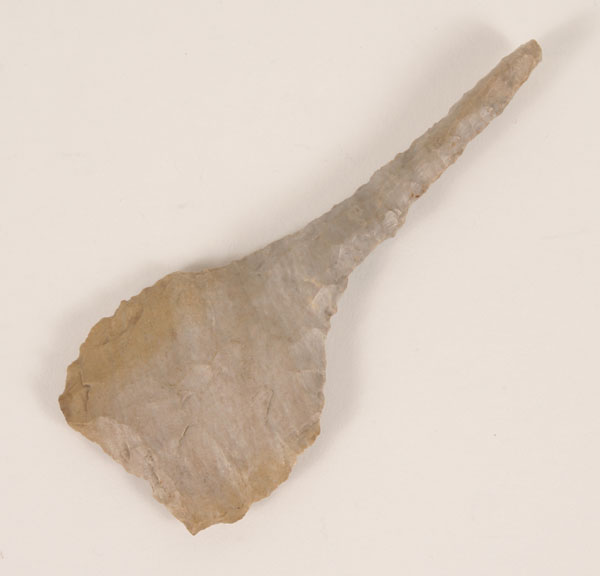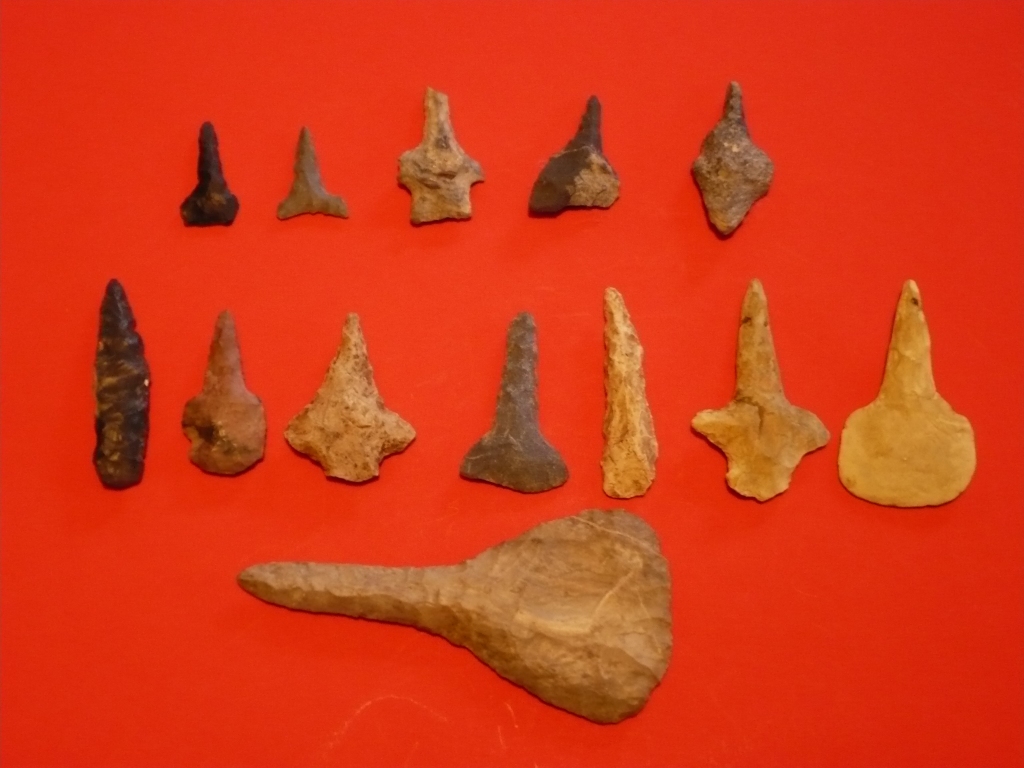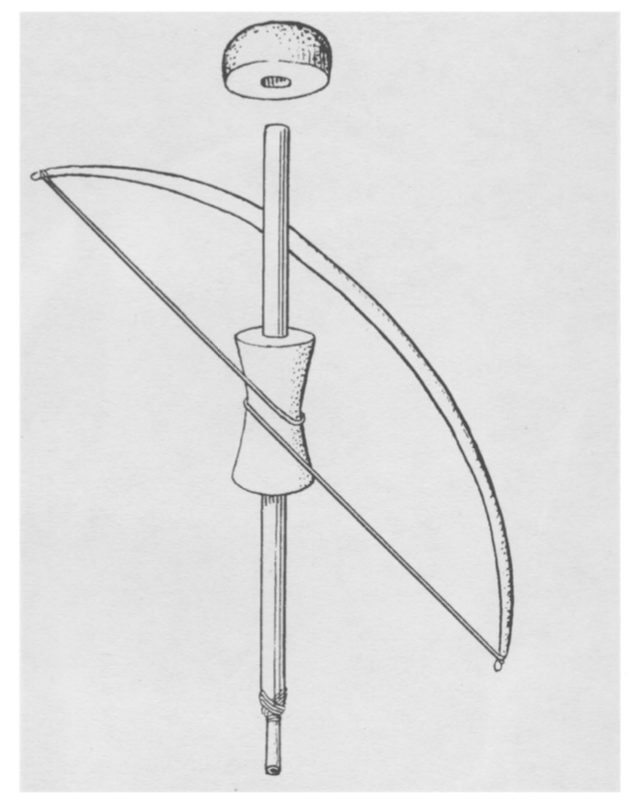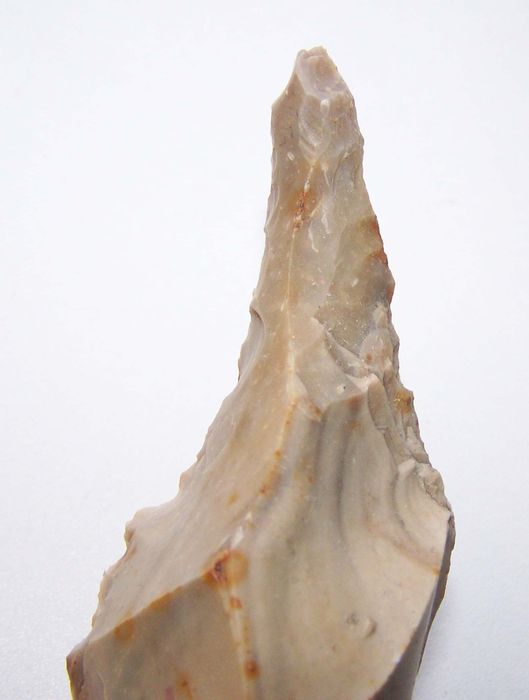STONE AGE
Drilling technology had its roots in the Upper Paleolithic. During the Stone Age, drills were generally made of flint blades which were trimmed to sharp points by bilateral flaking and that these points were turned by hand, a very slow process.

Flint borers and drills (Stone Age)

Flint drill (Stone Age)


Among the first objects to be perforated by ancient humans were shells and teeth (Braidwood 1967). By perforating them, the hunters and gatherers of the Upper Paleolithic period (ca. 25,000-12,000 B.C.E.) could string and wear these objects, which served as amulets. These objects were perforated by means of hand-held lithic borers that preceded clockwise/counterclockwise rotational drilling.
The method was very effective on soft stone but ineffective on harder stones.
In the Mesolithic Period, compared to the Palaeolithic era, the drills were probably hafted in bone or wooden handles. Held by hand, these tools were less cumbersome and more efficient than their Palaeolithic predecessors.

Wooden, osseous and flint drill bits were the most common during this period. Objects of shell, ivory, antler, bone, and tooth were perforated. They were also used for the production of beads made from rocks and minerals.


During this period, more efficient rotation was attained by a typical bow drill. It was palm-driven and a thong was wrapped around the stick or shaft and pulling on the ends of the thong.
Rapidly moving the bow back and forth rotated the drill at approximately 850 revolutions per minute (Knobloch 1939). The bow drill required that a palm rest be placed on the upper end of the drill shaft to exert downward pressure.


The microdrill-whether flint or obsidian-was breakable, could not be easily reused, and was confined to drilling relatively soft substances.
In the Neolithic period, the limitations of microdrills were eventually overcome by developments of different types of loose abrasives. They stones were polished giving it a cleaner shape. The experience gained reflected itself in new drilling techniques, which permitted hardstones such as quartz to be formed into elaborate and decorative beads.


BRONZE AGE
During the Bronze Age, there was a realization that a chipped-stone drill was not an efficient carrier of abrasives. In an effort to overcome the relative lack of drills, a more perishable drill made of copper replaced flint drills. Copper was soft enough to permit the embedding of an abrasive. Copper drills had sharper and stronger edges and created larger holes with finer finish. Another advantage of a copper tool was that if it breaks, it still has value as scrap metal that can eventually be re-melted and formed into another implement or ornament.
These drill points had sharp edges that ultimately developed into arrow shapes with two distinct cutting edges. This shape was effective, especially when made of iron or steel, and remained popular until the end of the 19th century, when factory-made, spiral-fluted drills became available at reasonable cost to displace the former.
Conclusion
In conclusion, the Homo sapiens of the prehistoric times continually strived for a greater and better development. The evolution of this drilling technology showed their ability for creating something functional from stone materials indicating a cognitive revolution as well as motor skills recognition. They intellectually examined and learnt how the drill process worked and began thinking and trying various methods for improvement. This even paved a way in terms of architecture, agriculture and design.
Referencing
Surface.syr.edu. 2020. [online] Available at: <https://surface.syr.edu/cgi/viewcontent.cgi?article=1100&context=beads> [Accessed 5 August 2020].
Encyclopedia Britannica. 2020. Hand Tool – Drilling And Boring Tools. [online] Available at: <https://www.britannica.com/technology/hand-tool/Drilling-and-boring-tools> [Accessed 5 August 2020].